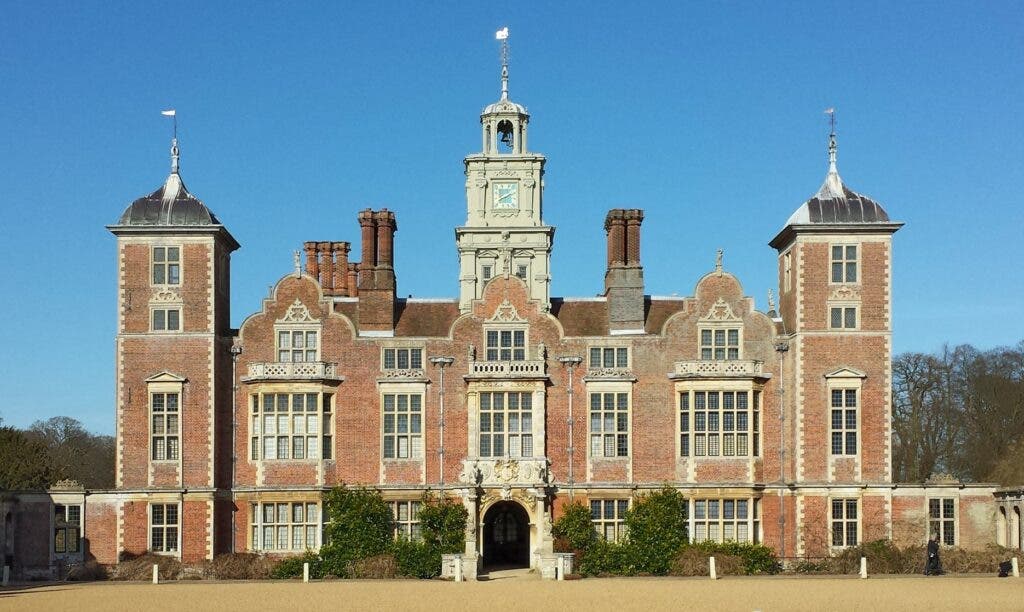Without any visitors amid the pandemic, many of the historic buildings across the United Kingdom have been invaded by hundreds of moths – all chowing down on priceless carpets, tapestries, and art. Now, administrators at one of the affected buildings hope to fight back by deploying a large number of microscopic, parasitic wasps.

The pest control technique will be used in a few weeks at Blickling Hall in Norfolk, which is thought to be the birthplace of Henry VIII’s second wife Anne Boleyn. The property has a long list of treasures, such as a Peter The Great tapestry, given by Russia’s Catherine The Great to Blickling’s owner, and a state bed with the most complete 18th-century examples of a canopy and headcloth.
Blickling is one of the more than 500 historic castles, houses, parks, and monuments regularly maintained by UK National Trust. But the pandemic presented a new challenge for many of them. A recent survey of the properties found that the number of bugs had risen by 11% in 2020 compared with the previous year. Mold outbreaks were also reported due to a lack of activity to drive airflow.
Now, a multi-pronged trial at Blickling will use a microscopic parasitoid wasp, called Trichogramma evanescens, together with specially prepared moth pheromones to target the whole lifecycle of the moth. While both wasps and pheromones have been used separately against moths in the past, this is the first time the combination is tried out in a heritage site, according to the National Trust.
“It’s not like our tapestries are falling off the wall and our things are being munched to bits,” Hilary Jarvis, an assistant national conservator at the National Trust, told The New York Times. “It’s just that no damage is acceptable and it’s heartbreaking when you do find something,” she said. “We know they’re there and we’re not going to be complacent, and I can’t take the risk that we let those moths thrive.”
The wasp chosen for the experiment is a natural enemy of the clothes moth. It searches for moth eggs and lays its own inside, so that a wasp hatches instead of the moth larva. The wasp measures about 0.5 millimeters so it’s barely visible and it’s also not harmful to humans or animals. They will be housed in small dispensers, each with 2,400 wasps, and placed in drawers or open rooms.
Meanwhile, the pheromone tabs will disrupt the mating of adult moths. They will continuously spread female pheromones – chemicals released to attract males of the same species — to confuse male moths. This reduces their chance of finding a female mate. The tabs use electrostatic technology to physically transfer the pheromone onto the bodies of male moths, turning them into portable female pheromone dispensers.
“We are really hoping this pioneering approach will provide a practical and sustainable method that any of our properties can use to deal with serious infestations,” Jarvis told the BBC. “The lockdown has suited our resident bugs. The relative quiet, darkness, and absence of disruption from visitors and staff provided perfect conditions for larvae and adults alike from March onwards.”
The anti-moth campaign will begin early next month and continue through the rest of the year. Once their mission is complete, the wasps will eventually die and disappear into house dust. If the trial significantly reduces the moth population, Jarvis said it could be used in the other properties of the National Trust experiencing the same problem in the United Kingdom.
Buildings and roads around the world have been filling with animals that ventured into places where they couldn’t or wouldn’t before the pandemic. Bats nestled in the spaces between walls of newly empty buildings in the US, goats were seen running in streets in the UK, and coyotes roamed in San Francisco, for example. The UK’s moths are part of the same trend.









